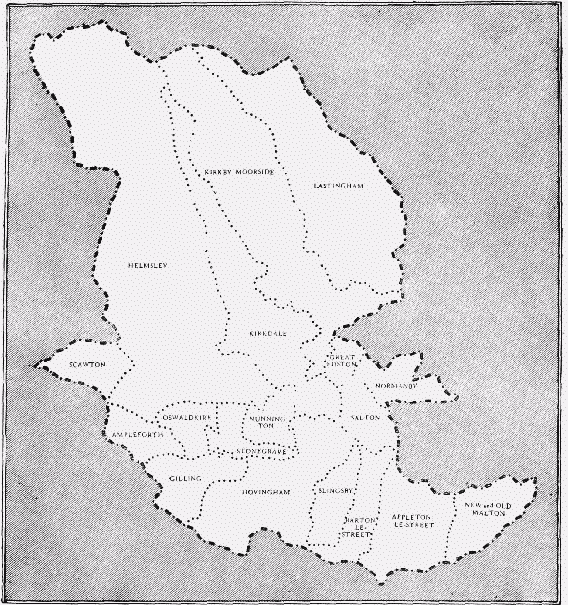A History of the County of York North Riding: Volume 1. Originally published by Victoria County History, London, 1914.
This free content was digitised by double rekeying. All rights reserved.
'The wapentake of Ryedale', in A History of the County of York North Riding: Volume 1, ed. William Page (London, 1914), British History Online https://prod.british-history.ac.uk/vch/yorks/north/vol1/pp459-460 [accessed 1 February 2025].
'The wapentake of Ryedale', in A History of the County of York North Riding: Volume 1. Edited by William Page (London, 1914), British History Online, accessed February 1, 2025, https://prod.british-history.ac.uk/vch/yorks/north/vol1/pp459-460.
"The wapentake of Ryedale". A History of the County of York North Riding: Volume 1. Ed. William Page (London, 1914), British History Online. Web. 1 February 2025. https://prod.british-history.ac.uk/vch/yorks/north/vol1/pp459-460.
THE WAPENTAKE OF RYEDALE
containing the parishes of Ampleforth; Appleton-Le-Street; Barton-Le-Street; Great Edston; Gilling; Helmsley; Hovingham; Kirkby Moorside; Kirkdale; Lastingham; New Malton, including the parishes of St. Leonard and St. Michael; Old Malton; Normanby; Nunnington; Oswaldkirk; Salton; Scawton; Slingsby; Stonegrave

Index Map to the Wapentake of Ryedale
All the above places except Lastingham appear in the wapentake known as that of Maneshou in 1086, (fn. 1) and Lastingham, then a member of 'Dic,' had become a member of Ryedale Wapentake by 1284–5, (fn. 2) the first mention found of the name now given to the wapentake being in 1165–6. (fn. 3) On the other hand, Maneshou Wapentake in 1086 included the whole parishes of Kirkby Misperton and Sinnington. (fn. 4) The latter had become a member of Pickering Lythe (the old 'Dic' Wapentake) by 1284–5, (fn. 5) but Kirkby Misperton was still a member of Ryedale, (fn. 6) as all its hamlets were till 1428 (fn. 7) or later. They were members of Pickering Lythe by the close of the 16th century. (fn. 8) Places which were in Maneshou Wapentake in 1086 and have since disappeared or only remain as farms are Salescale, (fn. 9) Middleham, (fn. 10) Tilstune, (fn. 11) and Ricalf (Riclose, Ricolff, xiii cent.), 'which may have stood on Riccal Moor, near the spot where the road to Nunnington crosses the river Riccal, and about half-way between Muscoates and Harome.' (fn. 12) Another place mentioned in 1284–5, but now lost, is Bulford (Buldford), which may be represented by Bowforth, a farm in the south of Kirkby Moorside parish, near the ford across Hodge Beck. (fn. 13)
The wapentake has always belonged to the Crown; it was said in 1284–5 to render 80 marks instead of the ancient farm of 50 marks. (fn. 14) At the inquiry held by Edward I in 1275–6 the following liberties were claimed: the Abbots of St. Mary's, York, and Byland Abbey, and the lords of Barton-le-Street, Helmsley, Hovingham, Malton and Stonegrave, and the church of St. Peter at York claimed to hold liberties and to have had courts leet; the constable of Helmsley even prevented the bailiff from holding his wapentake court at Harome. (fn. 15) The ecclesiastical judges, it was asserted, held pleas other than those concerning wills and marriage. On the other hand, charges were made against the king's ministers—namely, that the sheriffs took bribes and allowed murderers and felons to escape; some of them abused their offices to extort money, and one and all amerced those who did not come to their courts, although the complement of suitors was already made up. (fn. 16) The lord of Slingsby (q.v.), who was impleaded for debt in the wapentake court in 1318, drove his creditor to take refuge in the church and broke up the court.
